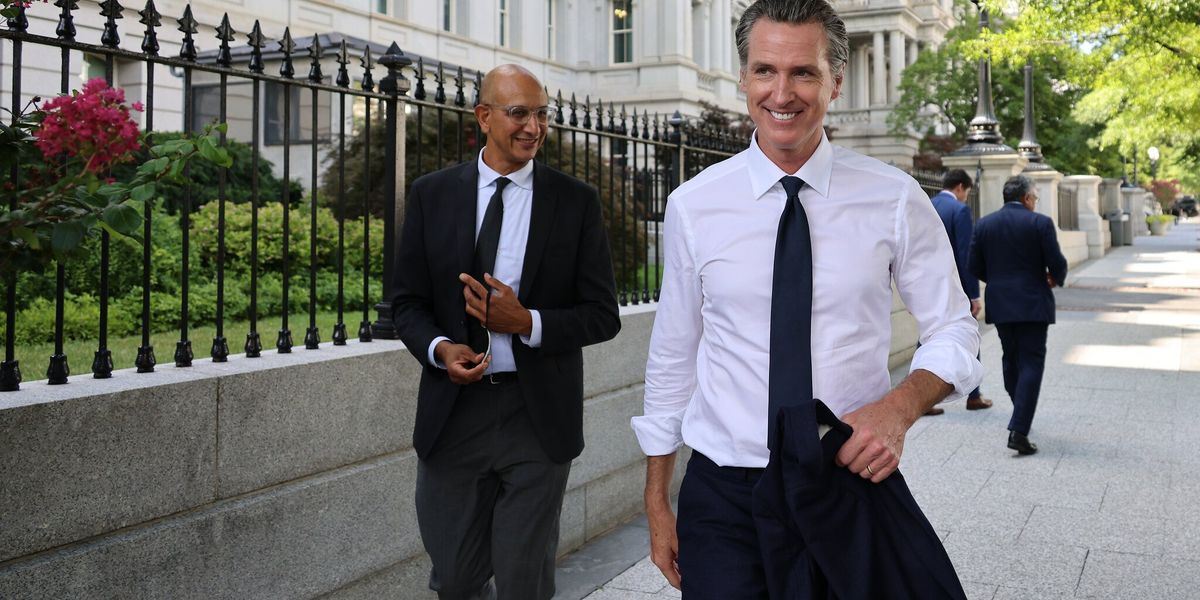
It was a win in the battle against plastic pollution — until it wasn’t.
On Oct. 8, California governor Gavin Newsom vetoed Assembly Bill 1628, which would have required plastic microfiber filters on new residential washing machines sold in the state by 2029. The bill, which passed California’s legislature on Sept. 13 , would have prevented millions of pounds each year of one of the most pernicious forms of microplastic pollution.
Newsom, in a brief letter, said that while he takes microfiber contamination seriously, he is “concerned that this bill will increase costs to consumers in advance of further research being completed and establishing the public policy rationale and details for new residential requirements.”
Advocates disputed this claim, saying that evidence-based scientific and economic research underpinned the bill. An economic study commissioned by Ocean Conservancy, for example, found that the filters would have increased the price tag of washing machines by $14 to $20, or about $2 per year over a machine’s average lifespan.
In terms of cost effectiveness, the bill was “low-hanging fruit,” ecotoxicologist Lisa Erdle, the director of science and innovation at 5 Gyres Institute, told Environmental Health News (EHN). Companies such as Patagonia are investigating upstream solutions for microfiber pollution — such as changing how textiles are woven — but this research is pricey and still in its infancy, she said.
“We were disappointed and honestly surprised” by the veto, Anja Brandon, an environmental engineer and associate director at Ocean Conservancy, told EHN. She noted that the American Association of Home Appliance Manufacturers, or AHAM, was the sole recent source of opposition to the bill, and suspects that their complaints about costs played a key role in Newsom’s decision. Erdle agreed with Brandon. “At that stage, it really was AHAM that was in opposition,” she said. “We think they had an outsized voice in the decision.” AHAM did not return requests for comment.
Plastic microfibers pose particular health risks

Plastic-based textiles such as polyester, nylon and acrylic shed tiny fibers each time they’re washed or worn. A single load of laundry can release millions of minuscule plastic strands, ranging in length from the size of a sesame seed down to a single bacterium. Around 2 million tons of plastic microfibers enter the ocean each year. Next to wear and tear from tires, laundering of synthetic textiles is the biggest source of microplastic pollution in the ocean, according to the International Union for the Conservation of Nature.
Compared to other forms of microplastic pollution, microfibers are particularly worrisome, Brandon said. These fibers’ needle-like shape means they can penetrate cells, embedding themselves into membranes in the lungs and intestines of humans and animals. From there, these fibers can pass into the bloodstream and migrate to other organs such as the brain and placenta. “That really does add a level of danger, or a level of risk that we just don’t experience with a lot of other microplastics,” Brandon noted. Eating or inhaling microplastics has been linked to a host of health harms including changes to cognition, immune function and digestion.
A science-based solution to capture microfibers
Erdle knows firsthand how well these filters work. In a 2021 study, she and her collaborators installed washing machine filters in 97 homes in a small town in Ontario, Canada, representing about 10% of local households. Erdle was surprised just how well the intervention worked. “We found a significant decrease in the microfibers at a wastewater treatment plant,” she told EHN. “It was more than what we had expected.” She suspects the 40% reduction might have something to do with the community taking other steps to reduce fiber pollution, such as laundering their clothing less frequently.
Water treatment plants are highly effective at capturing microplastics, Erdle explained, snagging up to 99% of these tiny pollutants. But this doesn’t prevent these fibers from contaminating the environment. The nutrient-rich sludge from treatment plants, also known as biosolids, is often spread on fields as fertilizer — allowing microfibers to enter air, water and soil, as well as plant and animal tissue. Sending these thread-like contaminants to landfills is a better solution, as most landfills in the U.S. are engineered to keep their contents contained.
How can I reduce microfiber pollution from my clothes?
There are several steps that any washing machine user can take to reduce their own rates of microfiber shedding. The most effective — and most expensive — is to install a filter such as the Lint LUV-R, which runs around $150 and can require the help of a plumber. Products that go directly into the drum of a machine, such as the Cora Ball and the Guppyfriend bag, also capture microfibers, although their efficacy varies.
Some of the best ways to reduce plastic microfiber pollution, however, don’t cost a cent. New clothing sheds the most material, as loose threads left over from manufacturing work their way free from the fabric. After wash number eight or so, one study found, microfiber loss declines dramatically. In other words, it’s better to keep clothes for longer periods or buy them secondhand, rather than discarding garments after a few uses. Colder and shorter cycles also significantly reduce microplastic shedding. Because modern detergents are formulated to work in cool water, several experts advise using the cold cycle as often as possible — not only to help prevent microplastic pollution, but to save energy and keep clothes looking newer.
At the same time, wealthy nations need to reexamine their love affair with fast fashion. Americans throw away roughly 11 million tons of used textiles per year. The global glut of low-quality clothing means that garments sent to poor countries for reuse or recycling often wind up dumped in landfills or waterways, scattering microplastics as they degrade.
The filtration fight continues
After Newsom’s veto, advocates are focusing on manufacturing-side solutions to microfiber pollution, and on pushing for filtration bills in other states. Oregon is “at the top of our list,” Brandon said, where a similar bill was introduced this year but failed to generate momentum. Ocean Conservancy is also working with advocates in Illinois and other Great Lakes states, where microplastic contamination is a major concern. “We’re not going to let California’s failure stop the rest of the country from moving forward to protect our ocean and our communities,” Brandon said.





